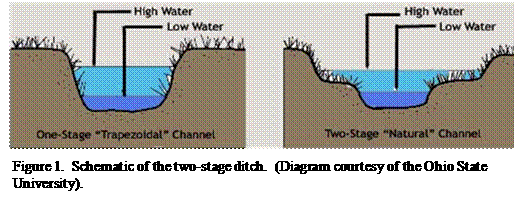Showcasing science on Capitol Hill
 By Nadine Lymn, ESA Director of Public Affairs
By Nadine Lymn, ESA Director of Public Affairs
Last night was the 18th consecutive year that researchers and policymakers came together over finger food and beverages to talk about the science and education projects funded by the National Science Foundation (NSF). “STEM Research and Education: Underpinning American Innovation” is sponsored by the Coalition for National Science Funding. Its goal is to showcase the wide variety of projects made possible by NSF and facilitate some good conversations between the recipients of these federal grants and those who manage the purse strings—Congress.
Nearly 40 exhibit booths showcased a wide range of topics to over a hundred congressional staff and Members of Congress, including Representatives Lois Capps (D-CA), Mike Simpson (R-ID), Hanson Clarke (D-MI), Rush Holt (D-NJ) and Colleen Hanabusa (D-HI).
The Ecological Society of America (ESA) was among the exhibitors and featured ESA graduate student Sarah Roley’s work on mitigating nutrient  pollution in the agricultural Midwest. Roley, a freshwater ecologist who is completing her Ph.D. at the University of Notre Dame, spoke with numerous congressional staffers who were interested in how the two-stage ditch—the focus of her research—works and how it might be applied in other areas besides Indiana. Among those interested were Kevin Warnke, Legislative Assistant for Rep. Ron Kind (D-WI) and Robert Bonner, with the House Committee on Appropriations (pictured above, speaking with Roley). Roley also told several senior NSF staff about her work, including Myron Gutmann, who heads the Social, Behavioral & Economic Sciences Directorate at the agency.
pollution in the agricultural Midwest. Roley, a freshwater ecologist who is completing her Ph.D. at the University of Notre Dame, spoke with numerous congressional staffers who were interested in how the two-stage ditch—the focus of her research—works and how it might be applied in other areas besides Indiana. Among those interested were Kevin Warnke, Legislative Assistant for Rep. Ron Kind (D-WI) and Robert Bonner, with the House Committee on Appropriations (pictured above, speaking with Roley). Roley also told several senior NSF staff about her work, including Myron Gutmann, who heads the Social, Behavioral & Economic Sciences Directorate at the agency.
Roley is a GLOBES NSF Fellow. Earlier in the day, she visited her Indiana delegation to express her appreciation for their past support of STEM research and education and to talk with them about how her work can help address a persistent problem in the Midwest and in areas downstream, particularly the Gulf of Mexico. As Roley explained during her congressional meetings and the CNSF reception, fertilizers used to grow crops move from farm fields and can contaminate drinking water and harm fishing industries downstream by fueling algal blooms. The two-stage ditch adds floodplains to incised channels, slowing the flow of water and allowing bacteria and plants to take Nitrogen out of the system. 
Farmers with whom Roley has worked seem receptive to the two-stage ditch. They usually don’t need to give up much land because many already have grassy buffers next to existing ditches and the addition of floodplains to these ditches keeps their fields from being flooded during high-water events. According to Roley, nutrients travel half as far from two-stage ditches than from conventional ditches and remove at least twice as many nutrients during floods. Another bonus, and one that can save dollars, is that the ditches maintain this ability even as they age.
Other exhibits at the CNSF event included such diverse topics as:
– Social Media and Tweens: Research on Development Outcomes
– Robotic Sensors for Monitoring Water Quality in Lakes
– Nitrous Oxide Emissions in Different Bioenergy Cropping Systems
– Nanomaterials and Environmental Interactions
– Is STEM still just a Man’s World?
Photos by Nadine Lymn: Sarah Roley talks with Robert Bonner, House Committee on Appropriations; Roley’s exhibit, sponsored by ESA.